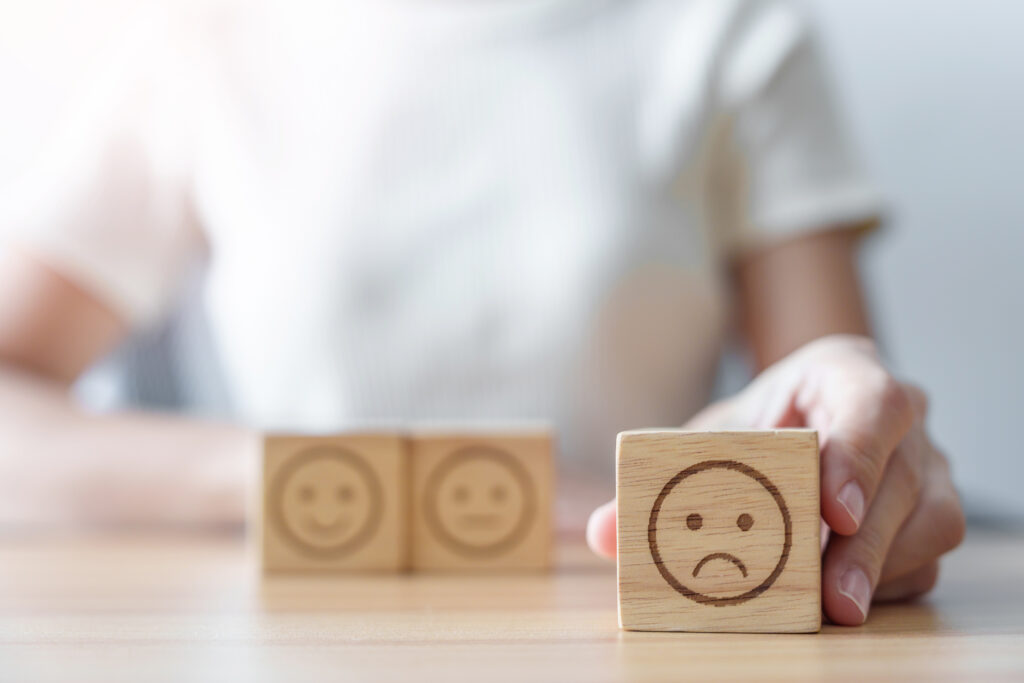Clearing the Clutter: How Emotional Detox Can Transform Your Life
If you’re feeling overwhelmed and bogged down by negative emotions, it’s time to consider an emotional detox.
Emotional detoxing is the process of releasing all the negative thoughts and feelings that weigh you down. It’s an effective way of cultivating emotional resilience and creating space for healthier, more productive emotions. Clearing the mental and emotional clutter can be a powerful tool for transformation in your life.
By focusing on the present and setting intentions for the future, emotional detox can help you break free from the cycle of stress and anxiety and take control of your well-being. So keep reading to learn more!
Understanding Emotional Detox

Emotional detox is all about taking control of your emotional well-being and breaking free from the negative emotions that weigh you down.
It’s a process that involves recognizing and releasing the negative thoughts and feelings that no longer serve you, creating space for healthier and more positive emotions to thrive.
When you understand emotional detox, you gain a deeper awareness of how your emotions impact your daily life. You start to realize that your emotions are not just random occurrences, but rather a result of your thoughts and experiences. This awareness allows you to take responsibility for your emotions and make intentional choices to cultivate positivity.
Emotional detox also involves learning to let go of past hurts and traumas, forgiving yourself and others, and embracing self-compassion. It’s about understanding that holding onto negative emotions only keeps you stuck in a cycle of negativity. By practicing emotional detox, you can create a mental and emotional environment that is conducive to growth, resilience, and overall well-being.
In the next sections, we’ll explore the benefits of emotional detox, how to identify negative emotions and triggers, techniques for detoxification, and how to cultivate emotional resilience.
The Benefits of Emotional Detox

Emotional detox offers a multitude of benefits that can transform your life and bring you closer to a state of inner peace and happiness. By releasing negative emotions and cultivating emotional resilience, you create a mental and emotional environment that is conducive to growth and overall well-being.
One of the key benefits of emotional detox is improved mental clarity. As you let go of negative thoughts and emotions, your mind becomes clearer, allowing you to think more clearly and make better decisions. This newfound clarity enables you to focus on what truly matters and helps you prioritize your goals and aspirations.
Emotional detox also enhances your relationships. When you release negativity, you become more present and attentive in your interactions with others. This improved emotional state allows for deeper connections and more meaningful relationships. By detoxing your emotions, you create space for love, compassion, and understanding to thrive.
Another benefit of emotional detox is increased resilience. As you let go of past hurts and traumas, you become more resilient in the face of adversity. You develop the strength and confidence to bounce back from challenges and setbacks, allowing you to navigate life’s ups and downs with grace and ease.
Overall, emotional detox empowers you to take control of your emotional well-being and live a more fulfilling life. It helps you break free from the cycle of stress and anxiety, allowing you to embrace a state of inner peace and happiness. So, why not give emotional detox a try and experience these incredible benefits for yourself?
Identifying Negative Emotions and Triggers

In order to effectively detox your emotions, it’s important to identify the negative emotions and triggers that are holding you back.
Negative emotions can manifest in various ways, such as anger, sadness, fear, or anxiety. Pay attention to how you feel in different situations and reflect on the underlying emotions behind your reactions.
One way to identify negative emotions is to practice mindfulness. Take a moment to pause and observe your thoughts and feelings without judgment. Notice any patterns or recurring emotions that arise. Are there certain situations or people that consistently trigger negative emotions within you? Understanding these triggers can help you gain insight into why certain emotions are present in your life.
Another helpful strategy is journaling. Write down your emotions and the circumstances that led to them. By keeping a record of your emotions, you can start to recognize patterns and identify the triggers that consistently bring up negative feelings.
Additionally, seeking professional help or therapy can be beneficial in identifying and working through negative emotions and triggers. A trained therapist can provide guidance and support as you navigate your emotional landscape.
Remember, the key to identifying negative emotions and triggers is self-awareness. Understanding your emotions helps you release negativity and promote emotional well-being.
Techniques for Emotional Detoxification

Now that you understand the concept of emotional detox and the benefits it can bring to your life, let’s explore some techniques that can help you release negativity and cultivate emotional resilience.
Here are a few powerful strategies to incorporate into your emotional detox practice:
- Meditation: Take time each day to quiet your mind and connect with your emotions. Sit in a comfortable position, close your eyes, and focus on your breath. Allow any negative emotions to surface and observe them without judgment. With each exhale, imagine releasing these emotions and replacing them with peace and calm.
- Emotional release exercises: Engage in physical activities that promote emotional release, such as yoga, dancing, or shaking. These activities help you physically release stored emotions and tension, allowing them to flow out of your body.
- Journaling: Write down your thoughts and emotions in a journal. This practice helps you gain clarity and understanding of your emotions, and allows you to release any negativity onto the page. You can also use journaling to set intentions and write affirmations that promote positivity.
- Self-care rituals: Prioritize self-care activities that nourish your mind, body, and soul. Engage in activities that bring you joy and relaxation, such as taking a warm bath, practicing self-massage, or enjoying a nature walk. By taking care of yourself, you create an environment that supports emotional detoxification.
Remember, emotional detox is a journey, and it may take time to fully release and heal. Be patient with yourself and celebrate small victories along the way. With consistent practice and dedication, you will gradually create a life filled with emotional well-being and resilience.
Cultivating Emotional Resilience

Cultivating emotional resilience is a vital aspect of the emotional detox process.
It involves developing the ability to bounce back from adversity, handle stress, and maintain a positive mindset in the face of challenges. When you cultivate emotional resilience, you become better equipped to navigate life’s ups and downs with grace and ease.
One way to cultivate emotional resilience is by practicing self-care. Taking care of yourself physically, mentally, and emotionally allows you to build a strong foundation for resilience. Engaging in activities that bring you joy, practicing relaxation techniques, and prioritizing your well-being can help you build the emotional strength necessary to face whatever comes your way.
Another important aspect of cultivating emotional resilience is cultivating a positive mindset. This involves challenging negative thought patterns and replacing them with more positive and empowering thoughts. By reframing your perspective and focusing on the good in every situation, you may build resilience to overcome adversity.
Additionally, cultivating emotional resilience involves developing a support network. Surrounding yourself with positive and supportive individuals who uplift and encourage you can also make a significant difference in your ability to handle stress and bounce back from setbacks.
By cultivating emotional resilience, you can navigate life’s challenges with more ease and grace. It helps you stay positive and overcome obstacles, leading to a more fulfilled and balanced life.
Creating a Daily Practice for Emotional Wellness

Creating a daily practice for emotional wellness is crucial for maintaining a balanced and resilient mindset. By incorporating small but meaningful habits into your daily routine, you can nourish your emotional well-being and enhance your overall quality of life.
One essential practice is starting your day with intention and mindfulness. Set aside a few moments each morning to reflect on your emotions, set positive intentions for the day, and engage in activities that bring you joy and peace. This could include meditation, gratitude exercises, or simply enjoying a cup of tea while embracing the present moment.
Throughout the day, make time for self-care breaks. Engage in activities that rejuvenate and uplift you, such as going for a walk in nature, practicing deep breathing exercises, or taking breaks to stretch and move your body. These moments of self-care can help you recharge and maintain a positive emotional state.
In the evening, establish a calming bedtime routine. Engage in activities that promote relaxation and restful sleep, such as reading a book, taking a warm bath, or practicing gentle stretches. Creating a peaceful and serene environment before bed can set the stage for a restorative night’s sleep and help you wake up feeling refreshed and emotionally balanced.
Ready to sell your property? Give us a call today and learn more about our professional photography services that can boost your property listing!
Plus, explore our virtual assistant coaching program to level up your business. Don’t forget to tune into our new podcast for even more valuable insights!
